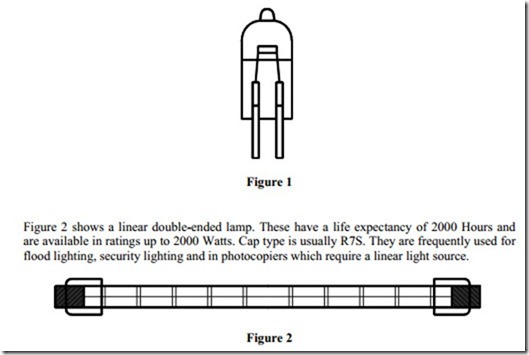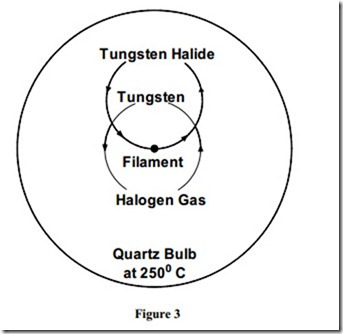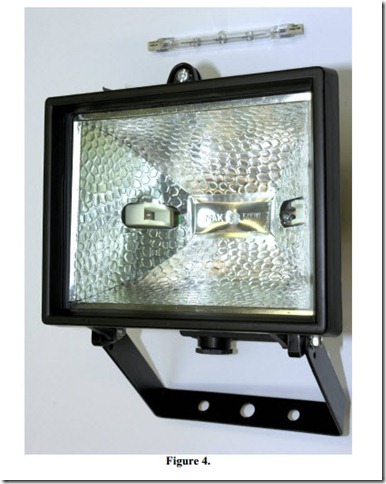Tungsten Halogen Lamps
Tungsten halogen lamps were introduced in the 1950s. These lamps incorporate tungsten filaments enclosed in a glass guard tube, which contains a carefully controlled amount of a halogen gas. Iodine or bromine gas is frequently used.
Figure 2 shows a linear double-ended lamp. These have a life expectancy of 2000 Hours and are available in ratings up to 2000 Watts. Cap type is usually R7S. They are frequently used for flood lighting, security lighting and in photocopiers which require a linear light source.
Figure 2
The Halogen Regenerative Cycle
Figure 3 illustrates the Halogen Regenerative Cycle. When the tungsten filament is heated by an electric current, it tends to vaporise. This tungsten vapour is carried to the comparatively cool wall of the lamp by the process of convection. It combines with halogen to form a tungsten halide. This compound then returns to the filament. It is chemically converted back into tungsten. As a result of this process minimal deterioration of the filament occurs through evaporation.
The halogen regenerative cycle is continually repeated and performs a self-cleaning action on the inner surface of the lamp. This contrasts greatly with standard domestic type GLS filament lamp where the evaporation of the filament causes a blackening of the lamp after a period of use.
The tungsten-halogen lamp has a much higher light output per watt and longer life than the standard GLS lamp. However, although it is a compact and easily controlled light source, it should be pointed out that a minimum bulb-wall temperature of 250 C is needed to maintain the tungsten-halogen cycle. Also, to prevent damage to the lamp fitting, the temperature must not C. Correct operating voltage is essential.
The linear lamp must be operated within 4
of the horizontal position. If the angle of the lamp
is too great, the halogen vapour will migrate to the lower end, leaving the upper end starved. This will result in a rapid blackening of the lamp and correspondingly, reduced lamp life.
Figure 4 shows an example of a linear tungsten-halogen floodlight and lamp. Note the spring- loaded contact, housed in porcelain.
Handling Tungsten Halogen Lamps
Halogen lamps must be handled carefully, especially when being fitted. It is important not to contaminate the surface of the quartz tube with dirty or greasy hands, as this will result in fine cracks appearing on the lamp, causing premature failure. In practice, it is advisable to use a paper sleeve over the lamp, or handle the lamp by its ends. If the lamp is touched by hand it should be cleaned with a solvent such as industrial spirit or trichloroethylene.


